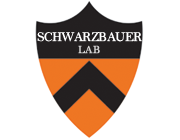Fibronectin matrix composition and organization can regulate cell migration during amphibian development
Type
Fibronectin (FN) is an adhesive extracellular matrix component that is essential for vertebrate development. It forms a fibrillar matrix at the cell surface which controls cell morphology, migration, proliferation, and other important cellular processes. To address specific functions of FN matrix structure during early vertebrate development, we introduced normal and mutant recombinant FNs (recFNs) into the blastocoel cavity of embryos of the amphibian Pleurodeles waltl. Here we show that a native recFN FN(A-B-) as well as recFNs with specific mutations in the cell-binding domain, FN(RGD-) and FN(syn-), or in a FN-binding region, FNDeltaIII(1), are assembled into fibrillar matrix. A recFN (FNDeltaIII(1-7)) that forms a structurally distinct matrix in cultured cells was assembled into aggregates at the cell periphery and was able to inhibit assembly of endogenous amphibian FN matrix in a dose-dependent manner. Cell adhesion, spreading, and migration were perturbed in vitro and in vivo on chimeric matrices containing FN(RGD-), FN(syn-), or FNDeltaIII(1-7) co-assembled with amphibian FN. Developmentally, this perturbation resulted in defects in mesoderm patterning and inhibition of gastrulation. These results indicate that FN matrix fibrillar structure and composition are important determinants of cell adhesion and migration during development.

